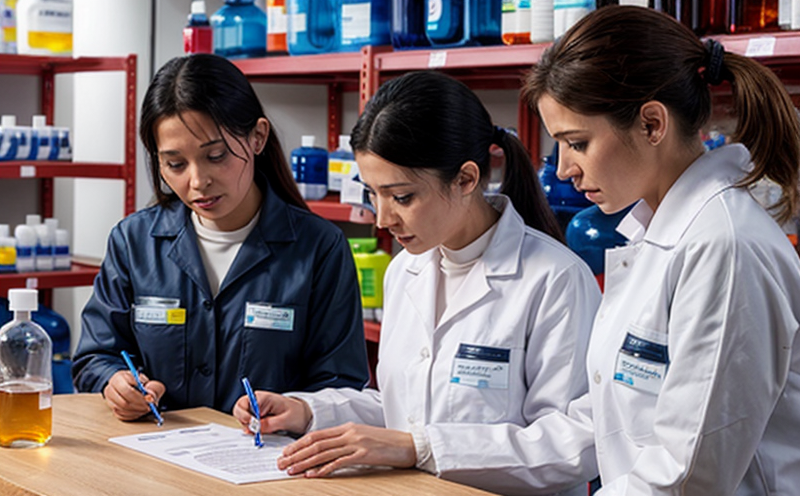Certification for Product Safety in Chemicals: Ensuring Protection of Humans, Environment, and Industry
In todays increasingly regulated business environment, companies dealing with chemicals must adhere to strict standards to ensure product safety. Certification for product safety in chemicals is a crucial aspect of maintaining public trust and regulatory compliance. This article will delve into the importance of certification, the various types of certifications available, and the process of obtaining them.
Why is Certification Necessary?
Chemicals play a vital role in numerous industries, including manufacturing, healthcare, and agriculture. However, their use can pose significant risks to human health and the environment if not handled and managed properly. Exposure to toxic chemicals has been linked to various health problems, including cancer, neurological damage, and reproductive issues. Moreover, improper disposal of chemical waste can lead to environmental contamination and harm ecosystems.
In response to these concerns, governments have implemented strict regulations to ensure that chemicals are produced, processed, and used safely. One of the most effective ways to demonstrate compliance with these regulations is through certification programs. Certification for product safety in chemicals serves several purposes:
Demonstrates Compliance: Obtaining a certification indicates that a company has met or exceeded regulatory requirements, giving customers, regulators, and other stakeholders confidence in the safety of their products.
Enhances Reputation: A recognized certification can boost a companys reputation by showcasing its commitment to product safety and environmental sustainability.
Competitive Advantage: Certification can differentiate companies from competitors and provide a competitive edge in the market.
Types of Certifications
Several organizations offer certifications for product safety in chemicals, catering to various industries and regulatory frameworks. Some of the most prominent certifications include:
ISO 9001 (Quality Management System): This certification ensures that a companys quality management system is aligned with international standards, which includes aspects related to product safety.
ISO 14001 (Environmental Management System): This certification focuses on environmental sustainability and covers aspects like waste management, pollution prevention, and compliance with relevant regulations.
OHSAS 18001 (Occupational Health and Safety Management System): This certification emphasizes the importance of occupational health and safety in the workplace, including measures to prevent chemical exposure and accidents.
REACH (Registration, Evaluation, Authorization, and Restriction of Chemicals) Compliance: REACH is a European Union regulation that requires manufacturers and importers of chemicals to register their substances with the EUs chemical agency. Companies can obtain certification for REACH compliance through various schemes like Responsible Care or ISO 9001.
Process of Obtaining Certification
The process of obtaining certification typically involves several steps:
1. Gap Analysis: Identify areas where the company needs improvement to meet certification requirements.
2. Implementation: Develop and implement policies, procedures, and controls to address identified gaps.
3. Documentation: Prepare necessary documentation, including manuals, procedures, and records.
4. Internal Audit: Conduct internal audits to ensure compliance with certification requirements.
5. Certification Body Selection: Choose a certified body that will conduct the external audit and issue the certificate.
6. External Audit: The certification body conducts an independent assessment of the companys operations to verify compliance.
QA Section
Q: What are the main differences between ISO 9001, ISO 14001, and OHSAS 18001 certifications?
A: While all three certifications focus on management systems, they have distinct emphasis areas. ISO 9001 is primarily concerned with quality management, including product safety aspects. ISO 14001 focuses on environmental sustainability, and OHSAS 18001 emphasizes occupational health and safety.
Q: Can a company obtain certification for multiple standards simultaneously?
A: Yes, many companies choose to implement multiple certifications to demonstrate their commitment to comprehensive safety and sustainability practices. However, each standard requires separate audits and documentation efforts.
Q: How often must certified companies undergo re-certification or surveillance audits?
A: Certification validity varies depending on the standard and certification body. Typically, companies need to undergo a full audit every three years for ISO 9001 and OHSAS 18001 certifications, while environmental management systems like ISO 14001 may require less frequent audits.
Q: Can certification be revoked or suspended if a company fails to meet requirements?
A: Yes, certification can be withdrawn or suspended if a company fails to meet the standards requirements. Certification bodies regularly monitor certified companies and may initiate corrective actions if compliance issues arise.
Q: What role do certification bodies play in the certification process?
A: Certification bodies like Lloyds Register, SGS, and Intertek are independent organizations that verify a companys compliance with specific standards through audits and assessments. They issue certificates to compliant companies and maintain records of certified organizations.
Q: Can certification be used as a marketing tool to attract customers?
A: Absolutely! A recognized certification can serve as a valuable marketing tool, demonstrating a companys commitment to product safety and environmental sustainability. This can lead to increased customer trust and loyalty, ultimately enhancing the businesss reputation and competitive position.
In conclusion, certification for product safety in chemicals is an essential aspect of maintaining public trust and regulatory compliance. By understanding the importance of certification, various types of certifications available, and the process of obtaining them, companies can ensure that their products meet stringent standards while minimizing risks to human health and the environment.

































